Opportunities in zero-emissions transportation
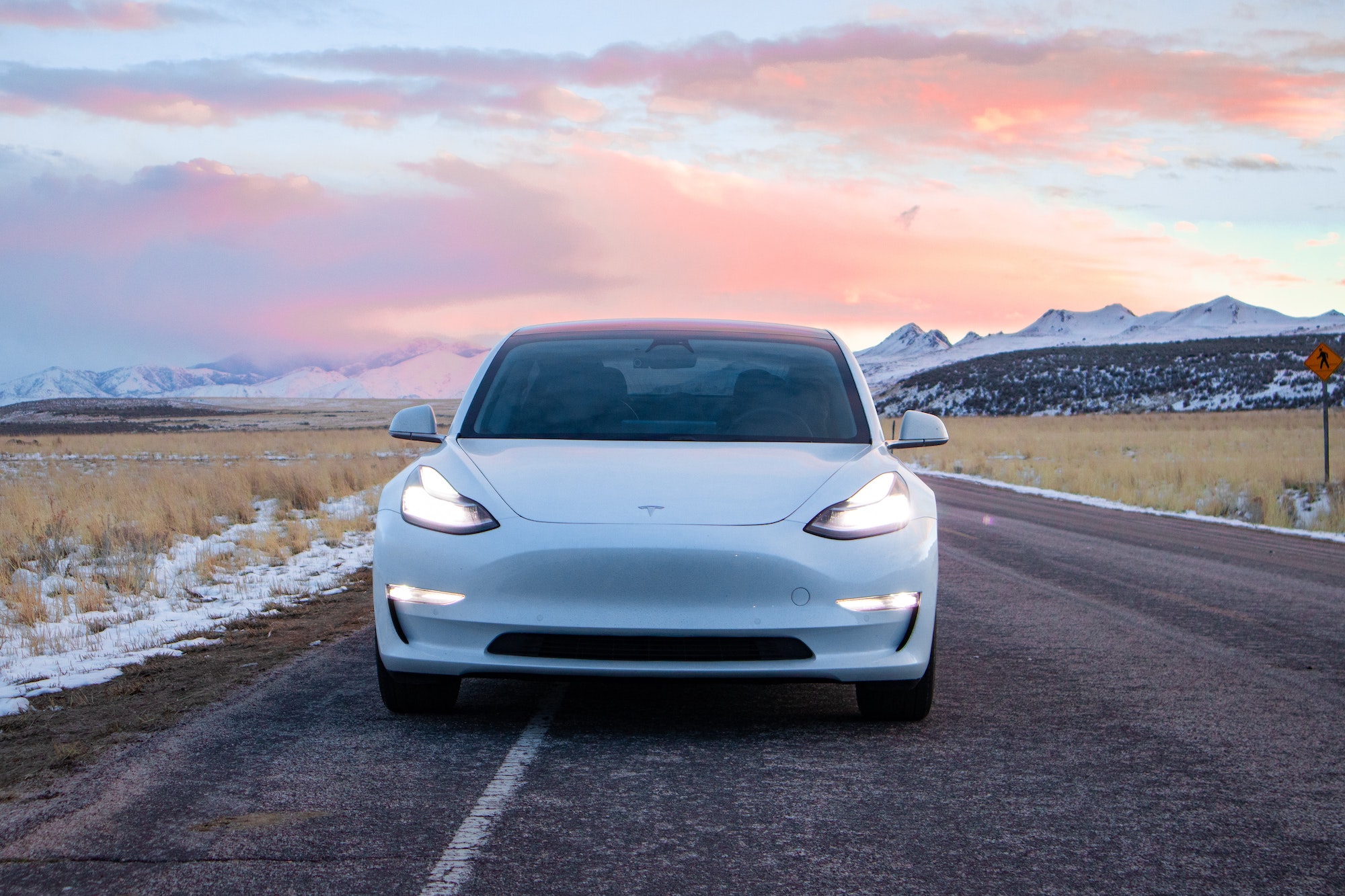
With about 11% of the total, transportation is one of the key contributors to global greenhouse gas (GHG) emissions. In some regions, the share of the total is even larger. For example in the Euro area it is around 15% (see chart below), and in Switzerland transportation is responsible for even more than 30% of the total GHG emissions.
This post investigates the challenges and opportunities that are presented by transitioning away from fossil fuels to sustainable transport. It is the second post in a series on the opportunities presented by tackling climate change.

Energy density - or: why fossil fuels are so popular
Before going into detail about how to transition transportation away from fossil fuels, it’s worth mentioning why fossil fuel-based propellants are so popular across all transportation sectors. The main reason is their high energy density. Energy density or specific energy is measured in the energy contained per unit of volume (liter) or mass (kg), respectively. The energy contained in a kg of gasoline is about 40-50 times higher than what is contained, for example, in a kg of a lithium-ion battery. (The energy density of gasoline is about 13000Wh/kg and the one of a Tesla battery between 250Wh/kg and 300Wh/kg). In other words, many alternatives to fossil fuels have to overcome their lower energy density in some way. Continuing with the example of batteries as an alternative to fossil fuel, consider two factors. First, the efficiency of an internal combustion engine (ICE) is in optimal scenarios 20%-35%. Diesel engines for trucks, buses, and newer diesel cars can achieve peak efficiencies around 45%. Let’s assume on average 30% efficiency, then, while driving, 70% of the energy contained in gasoline is simply lost to heat. This means that gasoline’s actual usable energy density in a kg of gasoline for a car is “only” about 10-15 times higher than a kg of lithium-ion battery. (A battery-electric drivetrain is about 90% efficient). The second factor is that battery research and manufacturing optimization is still progressing rapidly, whereas the efficiency of ICEs is not improving significantly anymore.
Liquid or compressed hydrogen (another reasonably popular energy storage mechanism for transport) has very high energy specificity (per kg) compared to gasoline or batteries, but rather low energy density (per liter): only approximately twice as much or less than a Li-ion battery. A fuel cell is about 40-60% efficient, and an electric motor 90%. This means on a per-volume basis the battery-EV can carry about the same amount of energy as a hydrogen-powered car with a fuel cell. We will come back to some of these simplified calculations on energy density further down.
When talking about alternatives to fossil fuels batteries and hydrogen are two of the most relevant contestants, indeed. It is important to mention at this point that both are energy carriers and not energy sources. That means that the energy needed to charge a battery or produce the hydrogen to fill a tank have to be produced elsewhere, namely through electricity: that’s why renewable electricity production and the decarbonization of the transport sector go hand in hand, as explained in our prior article. Other alternatives are biofuels or other gases besides hydrogen.
Transitioning to sustainable transport
To transition transportation towards zero CO2 emissions, we have to look at each mode of transport separately. The contribution of each to the total CO2 emissions from transportation varies country by country. For example, in the EU road transport with 71% of the total makes up the majority of transport emissions:
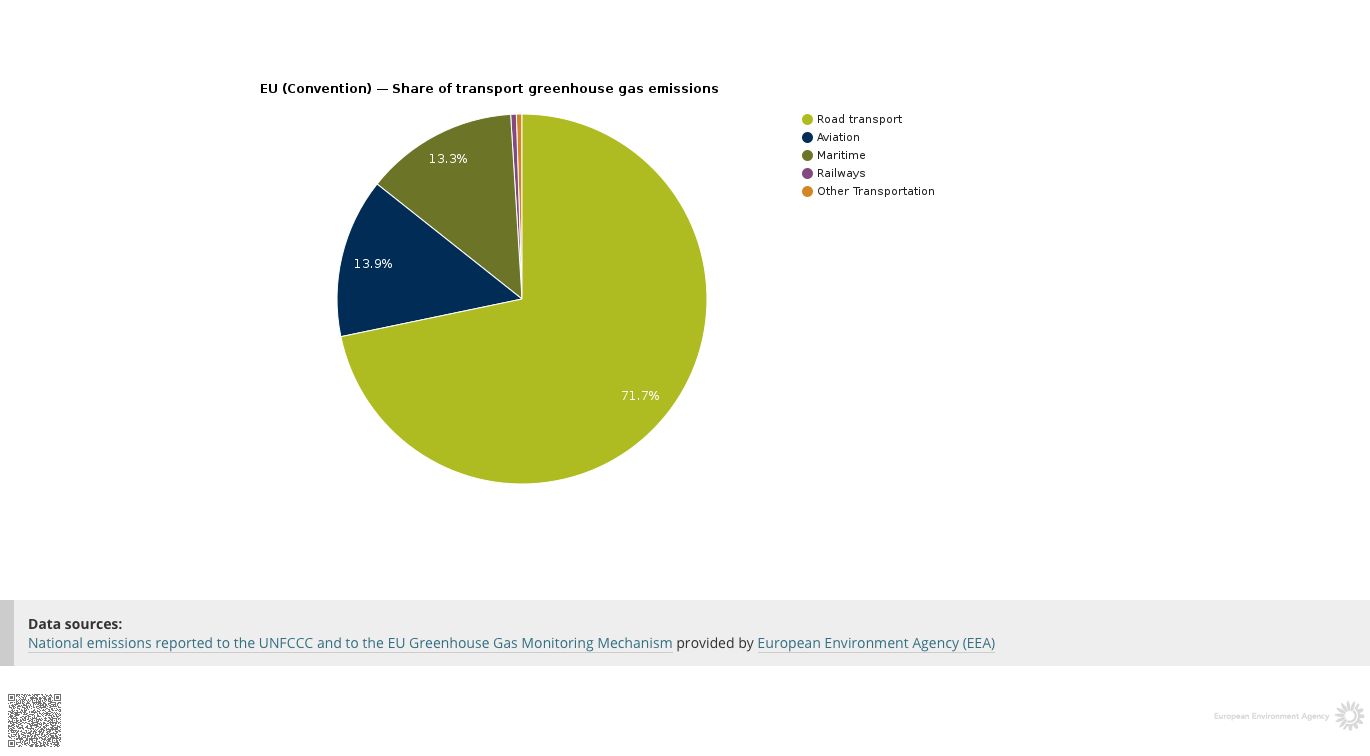
But no matter which country one looks at: a key contributor to greenhouse gas emissions from transport are cars. The chart below shows the share of cars (>40%) as part of total transport-related greenhouse gas emissions in the EU.
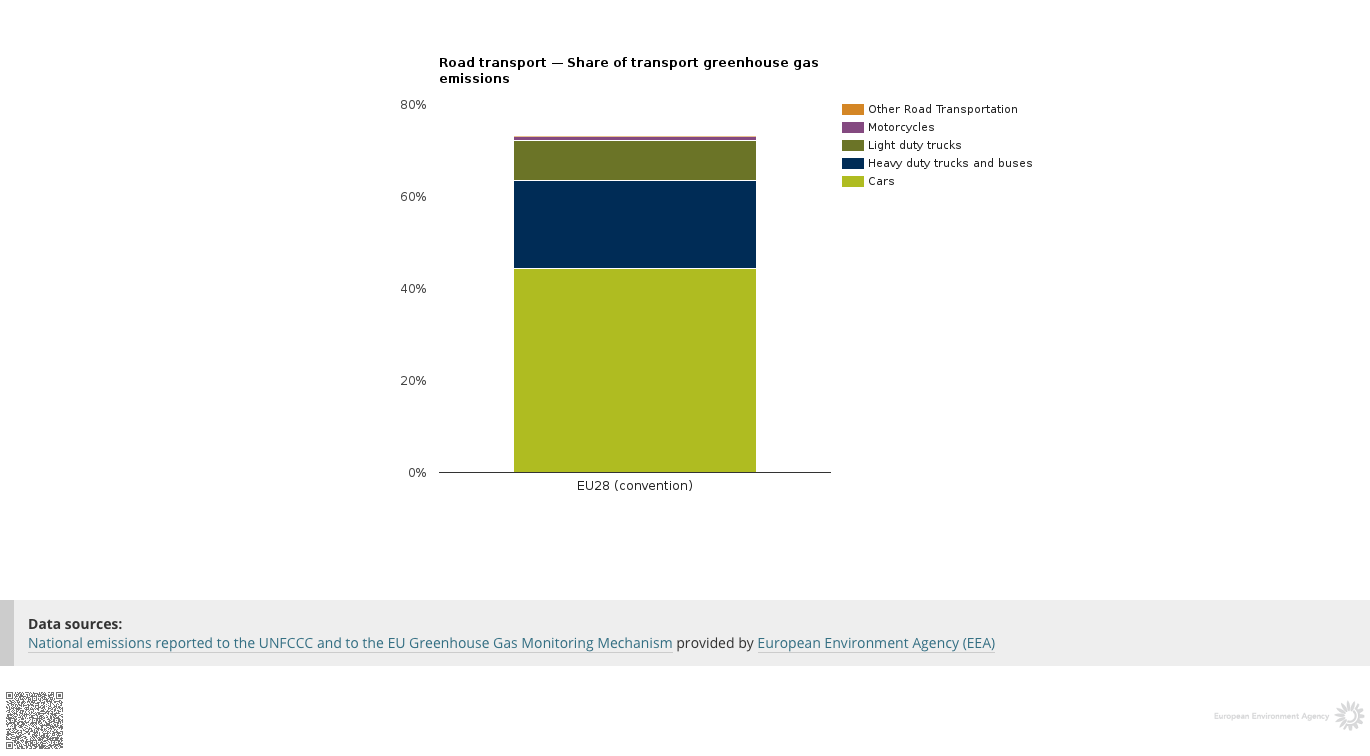
In the US the contribution of cars and light-duty vehicles is even almost 60% of all transportation-related greenhouse gas emissions:

This means reducing GHG emissions from cars will have a big impact anywhere, and as will be shown below, it is comparably straight-forward.
Transitioning cars and trucks
The most immediate and obvious choice to reduce emissions from cars and trucks are electric vehicles. In combination with electricity generation from renewable sources (as described in a previous article), they are practical already today, but also still offer tremendous opportunities for further innovation. Electric vehicles have no emissions at the tailpipe. With that, not only do electric vehicles emit no CO2, they also don’t emit any other harmful gases and particles. EVs are also significantly quieter than internal combustion engine (ICE) vehicles. This means that beyond reducing greenhouse gas emissions, the transition to EVs also offers tremendous benefits for cleaner and quieter cities. A taste of this was given during the COVID-19 crisis, where much-reduced traffic likely contributed to noticeably cleaner air in many cities around the globe. The impact of bad air quality stemming from road transport has recently been linked to various serious health conditions.
But are EVs as convenient as ICE vehicles? The range of commercially available passenger EVs already today reaches up to 600km. Charging your vehicle at home rather than going to the gas station is, in fact, incredibly convenient. The only remaining (but comparably small) fundamental inconvenience is the speed of recharging on long-distance trips. A full fast charge for a large battery can take 30-40 minutes. However, networks of chargers such as Tesla’s superchargers have shown that in practice the additional time spent for charging is minor, and can typically be used for a rest stop. The second remaining inconvenience of BEVs are a somewhat higher price compared to ICE cars. Both the charging time and the price of the vehicle are, of course, related to the battery. Luckily, there is still incredible progress happening in battery design and production. Even with just “incremental” engineering of Li-ion batteries, the capacity is increasing fast. As can be seen from the chart below, the cost per kWh of battery storage has improved from $1200 to under $200 in less than ten years. This represents a so-called learning rate of 18% on average per year. A cost of $100/kWh is seen as an inflection point for the industry, where the cost of EV would be on par or cheaper with any ICE vehicle. (In fact, ownership of Evs is generally cheaper than gasoline cars, due to cheaper fuel and lower maintenance cost. So the TCO of an EV in many cases may already be lower than a comparable gasoline car.) Assuming similar learning rates this point could be reached in less than 5 years.
Assuming the electricity used to charge the EVs is trending towards zero emissions with the greening power grid, an additional concern regarding electric vehicles is related to the emissions that are caused by their production, primarily battery production. The opportunity here is of course to transition battery production to electricity from renewables, too. Besides, steady innovation is happening in the energy efficiency of battery production, further improving the overall concept.
Detailed energy needs, resource requirements and environmental impact of battery production is beyond the scope of this post but will be covered in a future article. Just a few short remarks: in battery production, it could be interesting to look into the most energy/CO2 intensive steps (e.g. drying), there is enough lithium available and it can be recycled, batteries use less and less cobalt, the environmental impact of oil besides GHG emissions is often underestimated or forgotten.
While the use of battery-electric vehicles for personal cars appears to be the technology of choice by now, for delivery vans and trucks innovation is just starting. Vans for last-mile delivery also appear to be moving towards battery-electric, examples include Amazon’s order of a whopping 100’000 electric delivery vans from Rivian and UPS’s order of 10k such vehicles from Arrival.
Primarily for large trucks hydrogen is also being offered as an alternative, for example by Hyundai in a pilot with 1600 trucks in Switzerland. Hydrogen proponents emphasize the fast refueling times and the high energy density compared to batteries. The concern with batteries large enough for trucks is primarily their weight. However, some recent research indicates that despite these challenges even for trucks batteries might be a better solution than hydrogen. One of the prominent providers of a large electric truck is of course Tesla with it’s Tesla Semi truck. One additional technology that is proposed for trucks is the use of overhead wires in special lanes on the highway.
Besides use in trucks, hydrogen is also proposed as a solution for personal vehicles. It most likely makes more sense to use the electricity to charge a battery right away when green power is available, instead of the costly conversion to hydrogen and back, which would mean we would have to build out approximately twice as much renewable electricity generation capacity. Furthermore, the distributed network of car batteries available for charging may be an important technology to “buffer” production peaks of solar or wind energy (also known as “peak-shaving”). In other words, such automated smart charging of vehicles would align the renewable production curves with the consumption curve of EV charging, as shown below. (source).
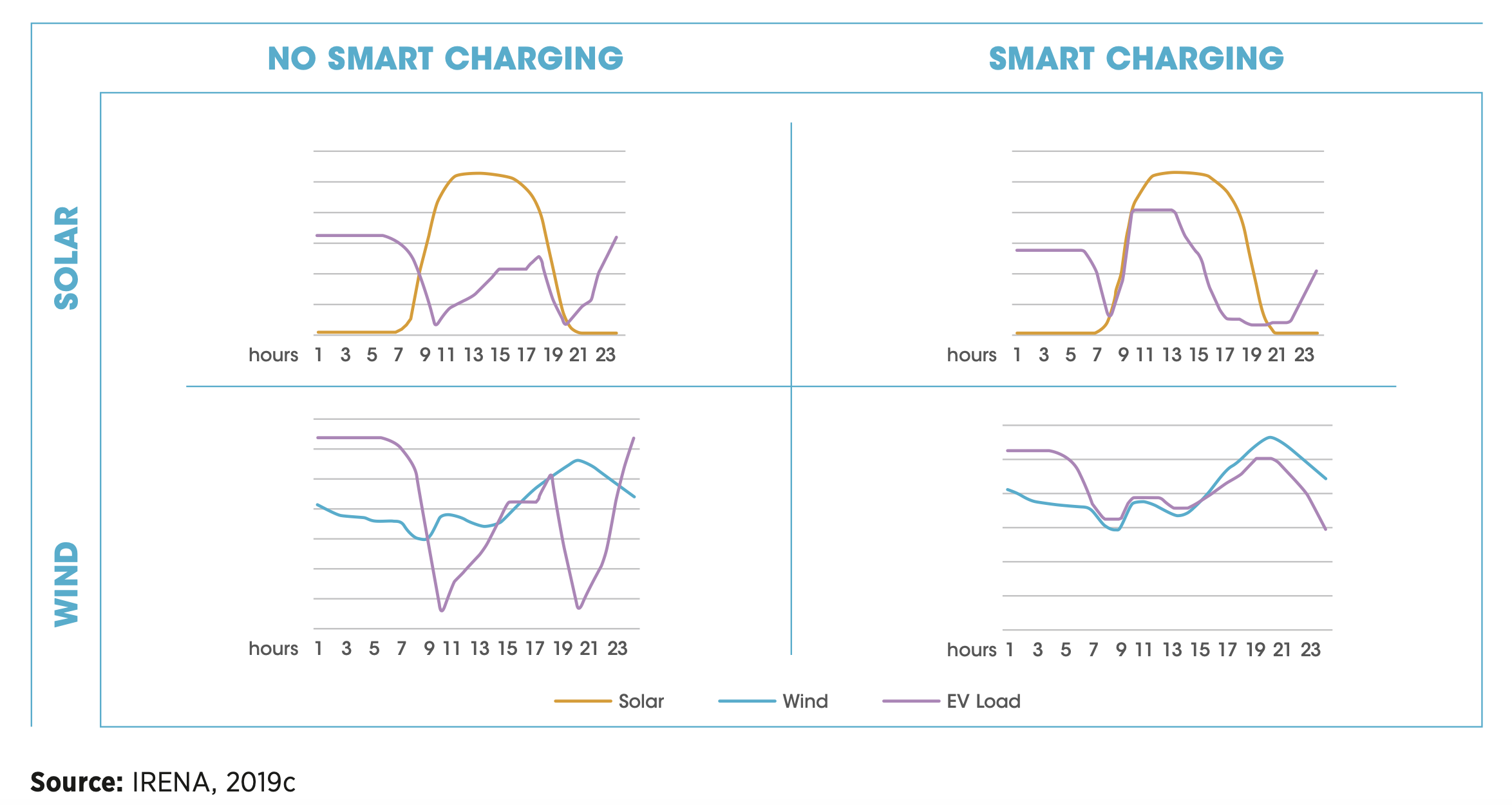 The y-axis shows the production of solar and wind over a day, as well as the consumption by an EV fleet with and without smart charging. The goal is to get the consumption and production curves aligned as closely as possible.
The y-axis shows the production of solar and wind over a day, as well as the consumption by an EV fleet with and without smart charging. The goal is to get the consumption and production curves aligned as closely as possible.
This buffer could further be extended to also allow for feeding electricity back to the grid, making the network of EV batteries a giant distributed electricity storage system.
Considering the advantages of EVs, most car manufacturers indeed have turned away from hydrogen to focus on BEVs rather than H2 powered vehicles for passenger cars.
Last but not least a mention of additional technologies that are not discussed in detail in this section: biofuels and biofuels as additives to standard gasoline (the EU mandates 6.4% of biofuels blended with regular gasoline or diesel), and vehicles powered by natural gas. Both biofuel and gas can be produced from biomass (or renewable energy in the case of gas), which makes them CO2 neutral. But it is important to consider the whole end-to-end impact of the production, which is beyond the scope of this particular article.
Trains, trams, and buses
Other larger vehicles for the transport of both persons and goods include buses, trams, and trains. Both are already very CO2 efficient on a per person or kg transported, especially if they are powered by electricity: railways contribute less than 1% to GHG transport emissions in Europe. And a trip by train emits 3-4 times less CO2 pre passenger than the equivalent car journey:
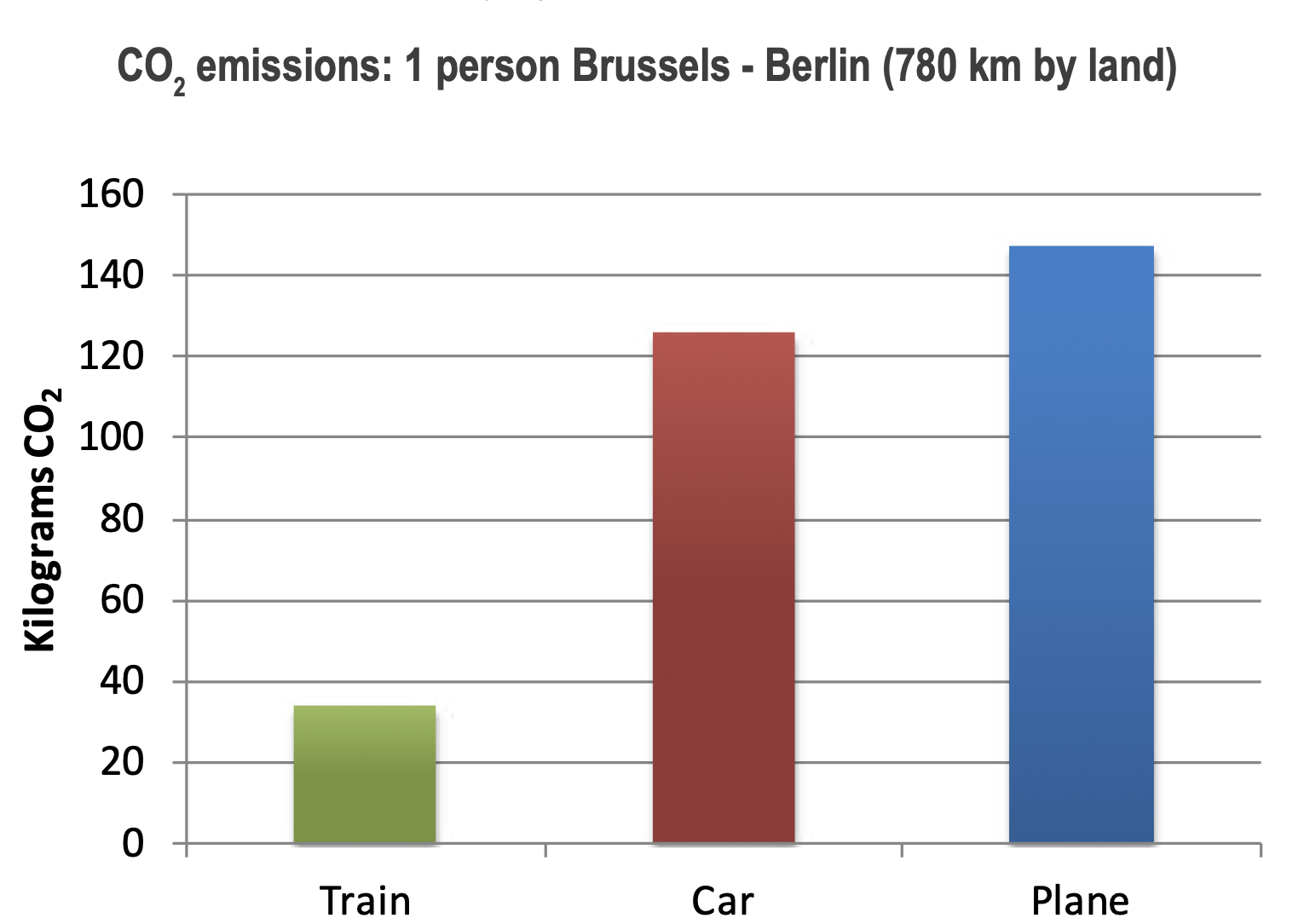
City-scale bus lines as well as train lines for urban, national and international routes are often electric already. The EU-average of electrification for train lines in 2017 was 54% - with Switzerland leading with 100% electrification. Overall CO2 emissions and direct use of fossil fuels have steadily decreased:

Further electrification should be pushed forward, similar to cars and trucks. Of course, for trains, trams, and some busses (trolley bus) overhead lines have been in use for a long time. More recently also battery-powered buses, or special solutions such as a rapid charge to a battery or super-capacitor at each stop are being investigated. Finally Biomethane etc. are probably more practical for applications in local public transport than for example in cars.
Maritime transport
The shipping industry is responsible for around 2.5% of global CO2 and greenhouse gas emissions, and about 13% of all transport-related GHG emissions in the EU. This means in the EU the share is almost as much as aviation. This is also true on a global level. In other words: reduction of maritime transport emissions can have a noticeable impact. It should be pointed out, however, that in relative terms transport of goods on ships is rather efficient: 80% of global trade is happening via maritime transport.
A first level to reduce emissions is increasing efficiency: research shows that efficiency could be increased by up to 30% at net negative cost due to fuel savings.
To move away from fossil fuels completely, innovation is happening but it appears to be rather slow compared to some other sectors. For short distances boats and ferries could be either electrified or operated with gas. Ferries appear to be the best candidate for electrification, as they usually bridge the shortest distances and can be recharged at their respective stops. Examples of electric ferries exist in Norway and Denmark, for example. Ellen, a Danish battery-electric ferry, came into existence through a EU research project, and with “ 4.3MWh, it has the biggest battery capacity of any ship at sea and equivalent to the average amount of electricity a [..] household consumes each year.” These electric ferries cover distances between 10 and 50km.
Liquid natural gas (LNG) is being discussed as a cleaner alternative to oil, and while emissions at the “tailpipe” are indeed much cleaner and less CO2 intensive, [recent studies show that leakage of methane (a strong greenhouse gas) in the supply chain and onboard is a major issue. This could exclude LNG as a viable option even for the short term, while in long-term fossil-based LNG is not an option anyway.
However, as described in our previous article on electricity and energy storage, such gas can also be generated from (renewable) electricity using power-to-gas approaches. In other words, if wind or solar are used to generate electricity, which in turn is used to generate gas, the LNG or similar type engines could be powered with truly green gas. However, this type of synthetic fuels can be costly, as will be covered in a dedicated section below.
Similarly, hydrogen (H2) can be generated the same way from (renewable) electricity in a slightly more efficient fashion. A study showed that given H2 fuel and technology are in place, the fleets could be transitioned without major impact on load capacity or routes. And indeed, a first ship powered by hydrogen is being planned in Norway. Last but not least ammonia from green electricty were recently proposed as another suitable fuel for sustainable shipping.
For a deeper look into shipping emissions and opportunities the report Towards Net-Zero Shipping is recommended.
Aviation
Finally, aviation is a significant and increasing contributor to greenhouse gases (14% of transport emissions in the EU), and probably poses some of the biggest challenges for the transition to sustainable methods of propulsion. The low energy density of batteries (per kg mass, i.e.energy specificity) makes battery-electrification very difficult, and probably almost impossible for long-haul distances. Besides Nevertheless, numerous activities are ongoing with electric planes for short-haul flights (e.g. Wright electric with easyjet) private planes (e.g. from Canada, or Switzerland). Also meant for short distances are novel means of electric air transport such as “air taxis” (Lilium or Wisk).
For long-haul flights the best and maybe only option is most likely synthetic fuel, similar to what was discussed for the maritime sector. In contrast to ships, however, in airplanes hydrogen may not be a viable solution because of its low energy density per unit of volume, which would require “bulky” airplanes with bad drag coefficients.
Biofuels from organic waste or specifically grown crops are also proposed as a possible solution for aviation, but their scalability is limited due to the amount of available organic waste and dedicated crop production would need large areas of land - solar is one or two orders of magnitude more efficient on the same area of land. This means biofuels are most relevant as an additive to (and not as a full replacement of) fossil fuels.
The bottom line is then that synthetic liquid jet fuels produced from renewable electricity sources appear from today’s standpoint the technologically most viable option to transition aviation away from fossil fuels.
While fuel costs make only up a part of air tickets, it is a substantial part. With synthetic fuels flying in the future might not be as cheap as today - this could also be a good thing making airtravel more exclusive again.
A few more words on synthetic fuels
The topic of synthetic fuels is too broad to cover in this article, and various processes exist to generate them. But many of the processes rely on combining H2 (hydrogen) and CO2 (yes, that CO2) to produce at the end of the process a synthetic fuel. The key point is of course not to use any CO2 from fossil sources for these reactions. This means it has to be obtained from other sources, for example from so-called direct air capture. This is the same technology that is also proposed for negative carbon emissions by capturing and storing CO2 in the ground. All of this is an emerging research and technology field with some first companies. One interesting example is a mini refinery combining all the necessary steps into one unit, created at ETH Zurich and spun out into a startup company. Apparently this solution is more efficient than the production of hydrogen from renewable electricity, and the conversion to liquid fuels from there. And end-to-end (cost) efficiency will be key here, to ultimately make the technology a viable replacement for fossil (jet) fuels. This developing space offers tremendous opportunities for research and commercialization.
The bottom line is that the technology for synthetic fuels is there or developing, but they will remain more costly as their fossil counterparts for a long time. Furthermore when produced from renewable electricity the conversion losses are high. This means that their use should be focussed on sectors where there is no good alternative, primarily aviation and the maritime sector, possibly some applications in heavy trucking. All other transportation sectors are more efficiently powered by electricity and batteries for storage.
A more detailed summary of synthetic fuels can be found in “The Future Cost of Electricity-Based Synthetic Fuels”.
Conclusion
The transportation sector is one of the key drivers of greenhouse gas emissions. However, the pathways to sustainable transportation are pretty clear, and most of the technology exists today. A big win that is possible today is to electrify ground transportation, most importantly cars. The maritime and the aviation sectors are more challenging to transition for long-haul routes, but synthetic fuels offer a viable path forward, while their cost-effectiveness needs to be improved. All of these areas offer tremendous opportunities to build amazing technology and businesses that will lead us to a bright future with clean transportation.
This concludes our article on transportation. The next article will cover the progress and opportunities in sustainable housing and utilities. You can also read our earlier article on opportunities in zero-emissions energy production and storage.
Finally, if you’d like to receive updates on new articles and on zerofy, please subscribe to our newsletter:
Sources
-
Fast Facts on Transportation Greenhouse Gas Emissions US EPA
-
https://twitter.com/aukehoekstra/status/1253989067823480832?s=21
-
https://twitter.com/cody_a_hill/status/1245870301298053122?s=21
-
Living near major roads linked to risk of dementia, Parkinson’s, Alzheimer’s and MS
-
1600 hydrogen trucks to enter the Swiss roads in the next 4 years
-
Daimler ends hydrogen car development because it’s too costly
-
The Underestimated Potential of Battery Electric Vehicles to Reduce Emissions
-
Lithium-Ion Vehicle Battery Production: Status 2019 on Energy Use, CO2 Emissions, Use of Metals, Products Environmental Footprint, and Recycling // New report on climate impact of electric car batteries
-
The future of lithium availability for electric vehicle batteries
-
Tesla’s Cobalt Usage To Drop From 3% Today To 0%, Elon Commits
-
Work on Goodenough’s breakthrough solid-state EV battery moves forward
-
Closed Loop Recycling of Electric Vehicle Batteries to Enable Ultra-high Quality Cathode Powder
-
Electric-Vehicle Smart Charging – Innovation Landscape Brief
-
Charging a bus in 15 seconds: Geneva’s new CO2-free public transport solution
-
Germany tests overhead wires to charge hybrid trucks on highways
-
Horizon 2020 Transport: Meet Ellen – the first all-electric ferry
-
LNG AS A SHIP FUEL IN THE BALTIC SEA REGION - study for LNG supply chain
-
Whac-A-Mole on the high seas: The curious case of ship emissions
-
Review of Maritime Transport 2017 by United Nations Conference on Trade and Development
-
Hydrogen ‘can power virtually all container ships crossing the Pacific’
-
LNG AS A SHIP FUEL IN THE BALTIC SEA REGION - study for LNG supply chain
-
Don’t Count on LNG as Ship Fuel of the Future, Nonprofit Says
-
https://theenergytransition.org/article/can-flying-be-made-carbon-neutral/
-
Albert Cheung, Flexibility and the Future of Power, at Wärtsilä Capital Markets Day 2019
